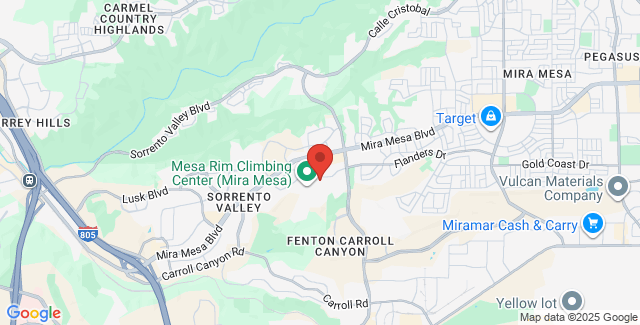Asbestos
Asbestos is a fibrous, silicate mineral known for its durability, heat resistance, and chemical inertness. These attributes made asbestos a commonly used material in construction and industry before its cancer-causing tendency was discovered. If you or a loved one has been injured by asbestos exposure, please contact an experienced attorney in your area today.

Types of Asbestos
There are three main types of asbestos.
- Chrysotile, or white asbestos, is the most common form of asbestos in the United States and Canada and may be the least harmful. The fibers are fine, smooth, and white.
- Amosite, or brown asbestos, is most often used in thermal insulation systems. The fibers are brittle and straight.
- Crocidolite, or blue asbestos, consists of straight fibers and is used less often than the other two.
Asbestos Exposure
Unfortunately, there are many opportunities for asbestos exposure since asbestos was used so abundantly in both industrial and consumer products. Most people that develop asbestos cancer and other asbestos diseases, including mesothelioma and asbestosis, usually have a history of chronic exposure to asbestos. Mesothelioma is somewhat unique in this respect, as mesothelioma cases have developed in people with limited asbestos exposure. As a result, there is no established "safe" level of asbestos exposure.
Workers are exposed to asbestos when the substance or products containing asbestos are cut, crushed, sanded, drilled or otherwise disturbed. When left undisturbed, asbestos-containing materials can be relatively safe. In cases where asbestos materials are mined, installed, removed, demolished, or serviced, exposure can be a risk unless strict asbestos removal techniques are employed.
When inhaled, microscopic asbestos fibers can make it past the body's natural defenses and deep into the lungs, causing asbestos disease. Once in the lungs, the fibers can irritate lung tissue leading to asbestos cancer. If asbestos fibers make their way to the alveoli or air sacs in the lungs where oxygen and carbon dioxide exchange takes place, they can cause irritation and scarring called asbestosis. Asbestos fibers that pass through the alveoli and into the pleural mesothelium, can eventually lead to asbestos cancer in the form of tumors and malignant mesothelioma.
Asbestos and Disease
Asbestos fibers are harmful to humans if inhaled. When a person breathes in the small fibers, they remain in the lungs and cause scar tissue to form on the walls of the alveoli (the tiny air sacs where oxygen and carbon dioxide are exchanged). The amount of oxygen that is available to the body is reduced through asbestos exposure and worsened through repeated encounters with ACM. There are several asbestos-related diseases that can result from inhaling asbestos fibers:
Asbestosis is a chronic condition that results from scar tissue being built up in the lungs. Asbestosis sufferers may experience shortness of breath and increased risk of lung infection. Damage to the lungs is often permanent.
- Mesothelioma is a form of cancer that results from asbestos exposure. It affects the chest or abdominal cavity
- Lung cancer can also be caused by asbestos exposure
- Other cancers that may result include esophageal, stomach, colon, and pancreatic
Numerous studies attest to the link between cancer and asbestos. Many people who have been exposed do not develop asbestosis or cancer until fifteen or more years after their contact with ACM. Smokers have a significantly higher risk of contracting an asbestos-related disease than non-smokers.
At-Risk Occupations
There are also several occupations that carry a high risk of asbestos exposure. The Environmental Protection Agency asserts that there is no known level of safe exposure, but the following workers are thought have the highest exposure to ACM:
- Asbestos removal workers
- Bricklayers
- Carpenters
- Construction workers
- Demolition workers
- Electricians
- Firefighters
- Furnace workers
- Insulation installers
- Ironworkers
- Janitors
- Longshoremen
- Maintenance personnel
- Mechanics
- Miners
- Oil refinery workers
- Painters
- Plumbers
- Power plant workers
- Railroad workers
- Roofers
- Shipyard workers
- Steel mill workers
- Telephone repair workers
In addition, people who live or work near a facility that uses asbestos risk inhaling fibers that have been released into the air.
Asbestos Products
The following is a list of products that commonly contain asbestos:
- Roofing shingles
- Felt and tar joint compound
- Cement pipes
- Drywall
- Ceiling tiles
- Siding gaskets
- Laboratory hoods
- Mastics and sealants
- Brake linings
- Fire doors
- Insulation on some wiring
- Cooling towers
- Paint
- Taping compound (thermal)
- Flexible duct connectors
- Greenhouse materials
- Appliance insulation
- Sheet vinyl floor covering
- Plaster sprayed-on fireproofing
- Refractory cement chalkboards
- Insulation on steam pipes
- Heat resistant gloves and suits
- Asbestos blankets
- Cork Board
How Concerned Should I Be?
Asbestos in the home can be of great concern. However, before you begin to remove products that you believe may contain asbestos, exercise caution. If you believe a product contains asbestos, do not tear, saw, or break it apart. The best course of action is to obtain a sample of the product and send it to the Environmental Protection Agency (EPA) to have it analyzed.
Where is Asbestos Found?
In the United States, asbestos has been used in a variety of industries and products. Some examples of products that contain asbestos include:
- Building materials, like cement and plastics
- Heat insulation and fire proofing
- Brake shoes and clutch pads in vehicles and airplanes
There are several general categories into which asbestos-containing materials can be classified:
- Surfacing materials, such as the acoustical material on the ceilings of many homes, schools, and other buildings
- Thermal System Insulation (TSI), such as the wrapping around boilers, pipes, and duct systems
- Other materials, such as floor tile, electrical panel insulation, and caulking
What to look for in Asbestos Abatement Contractors
Specialists in asbestos removal can be found in every state. Verify that the contractor is experienced and licensed for asbestos removal before work begins. Use the following checklist as a model when hiring an asbestos abatement contractor:
- Find a contractor with eight to ten years experience in asbestos removal
- Obtain at least three verifiable references
- Obtain a copy of the contractor's asbestos abatement license
- Obtain a written contract detailing the removal of asbestos siding, tiles, insulation, etc.
- Obtain a copy of the contractor's license
Asbestos Removal Technology
The technology used in asbestos removal has increased tremendously over the past thirty years. As people have become more aware of the dangers of asbestos exposure the demand for asbestos removal services has increased. Several products have been developed to help remove asbestos as quickly and safely as possible:
- Specialized asbestos vacuum cleaners
- Asbestos removal tape
- Protective suits
- Respirators and filters
Asbestos removal is usually performed when a building is being demolished - to ensure that construction workers and the immediate area remain free from contact with airborne asbestos dust.
Talk to an Asbestos Attorney
If you or a loved one has been exposed to asbestos materials and have developed an asbestos-related disease, it is important to seek the advice of an attorney, in addition to seeking medical care. An asbestos lawyer may be able to help you obtain compensation for your medical bills, loss of wages, and pain and suffering.




